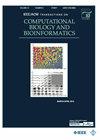Hyb_SEnc:基于混合特征向量和堆叠集合学习的抗结核肽预测器
IF 3.4
3区 生物学
Q2 BIOCHEMICAL RESEARCH METHODS
IEEE/ACM Transactions on Computational Biology and Bioinformatics
Pub Date : 2024-07-31
DOI:10.1109/TCBB.2024.3425644
引用次数: 0
摘要
结核病自古以来就困扰着人类,人类与结核病的斗争仍在继续。结核分枝杆菌是结核病的主要病因,感染了全球近三分之一的人口。多肽药物的兴起为结核病的治疗开辟了新的方向。因此,对于结核病的治疗,抗结核肽的预测至关重要。本文提出了一种基于混合特征和堆叠集合学习的抗结核肽预测方法。首先,选择随机森林(RF)和极随机树(ERT)作为堆叠集合的一级学习。然后,选择五种表现最好的特征编码方法来获得混合特征向量,再用决策树和递归特征消除(DT-RFE)来完善混合特征向量。经过选择后,最优特征子集被用作堆叠集合模型的输入。同时,使用逻辑回归(LR)作为堆叠集合二级学习器,建立最终的堆叠集合模型 Hyb_SEnc。在 AntiTb_MD 和 AntiTb_RD 的独立测试集上,Hyb_SEnc 的预测准确率分别达到 94.68% 和 95.74%。此外,我们还提供了一个用户友好型网络服务器(http://www.bioailab. com/Hyb_SEnc)。源代码可在 https://github.com/fxh1001/Hyb_SEnc 免费获取。本文章由计算机程序翻译,如有差异,请以英文原文为准。
Hyb_SEnc: An Antituberculosis Peptide Predictor Based on a Hybrid Feature Vector and Stacked Ensemble Learning
Tuberculosis has plagued mankind since ancient times, and the struggle between humans and tuberculosis continues. Mycobacterium tuberculosis is the leading cause of tuberculosis, infecting nearly one-third of the world's population. The rise of peptide drugs has created a new direction in the treatment of tuberculosis. Therefore, for the treatment of tuberculosis, the prediction of anti-tuberculosis peptides is crucial. This paper proposes an anti-tuberculosis peptide prediction method based on hybrid features and stacked ensemble learning. First, a random forest (RF) and extremely randomized tree (ERT) are selected as first-level learning of stacked ensembles. Then, the five best-performing feature encoding methods are selected to obtain the hybrid feature vector, and then the decision tree and recursive feature elimination (DT-RFE) are used to refine the hybrid feature vector. After selection, the optimal feature subset is used as the input of the stacked ensemble model. At the same time, logistic regression (LR) is used as a stacked ensemble secondary learner to build the final stacked ensemble model Hyb_SEnc. The prediction accuracy of Hyb_SEnc achieved 94.68% and 95.74% on the independent test sets of AntiTb_MD and AntiTb_RD, respectively.
求助全文
通过发布文献求助,成功后即可免费获取论文全文。
去求助
来源期刊
CiteScore
7.50
自引率
6.70%
发文量
479
审稿时长
3 months
期刊介绍:
IEEE/ACM Transactions on Computational Biology and Bioinformatics emphasizes the algorithmic, mathematical, statistical and computational methods that are central in bioinformatics and computational biology; the development and testing of effective computer programs in bioinformatics; the development of biological databases; and important biological results that are obtained from the use of these methods, programs and databases; the emerging field of Systems Biology, where many forms of data are used to create a computer-based model of a complex biological system

 求助内容:
求助内容: 应助结果提醒方式:
应助结果提醒方式:


